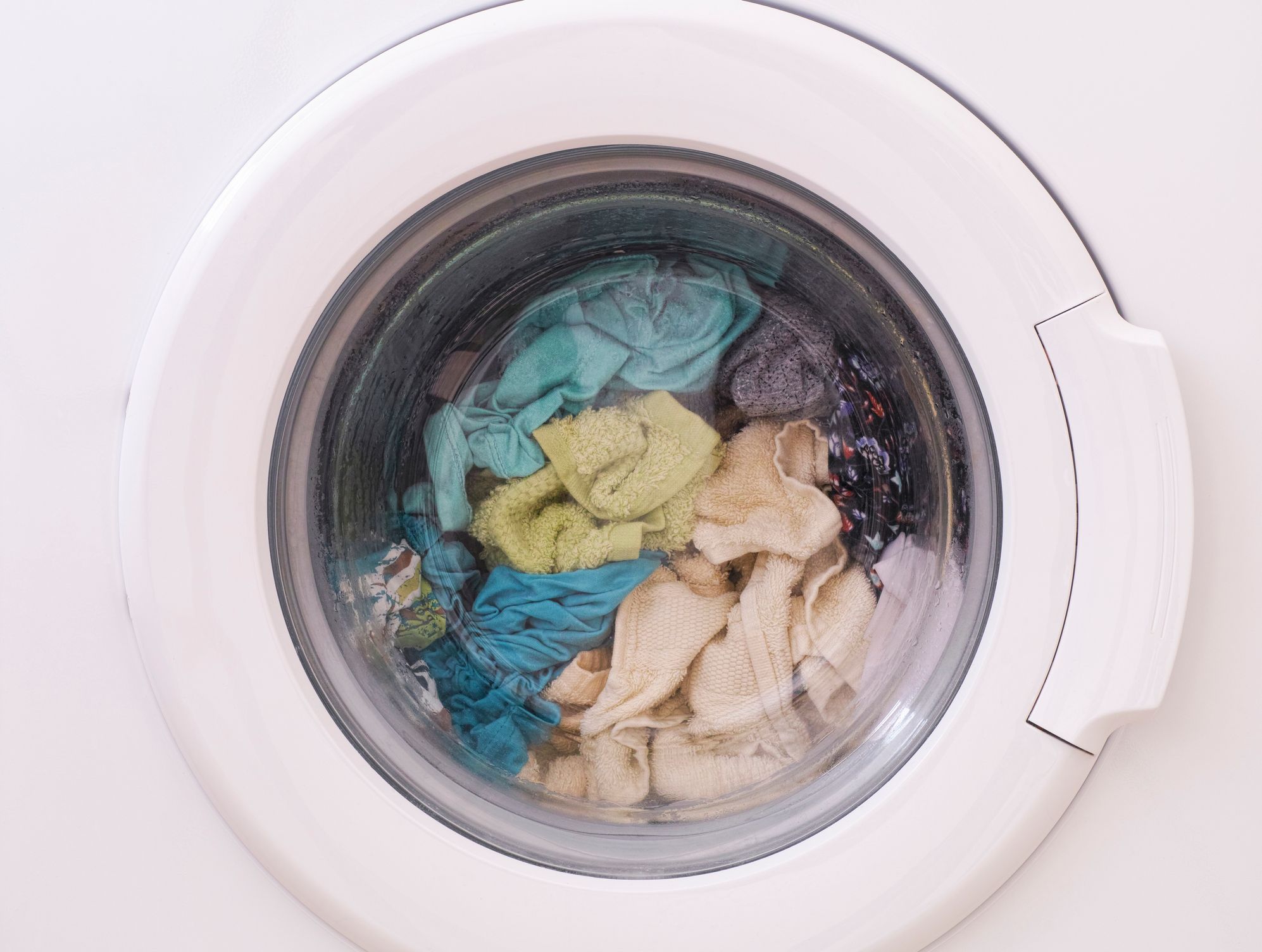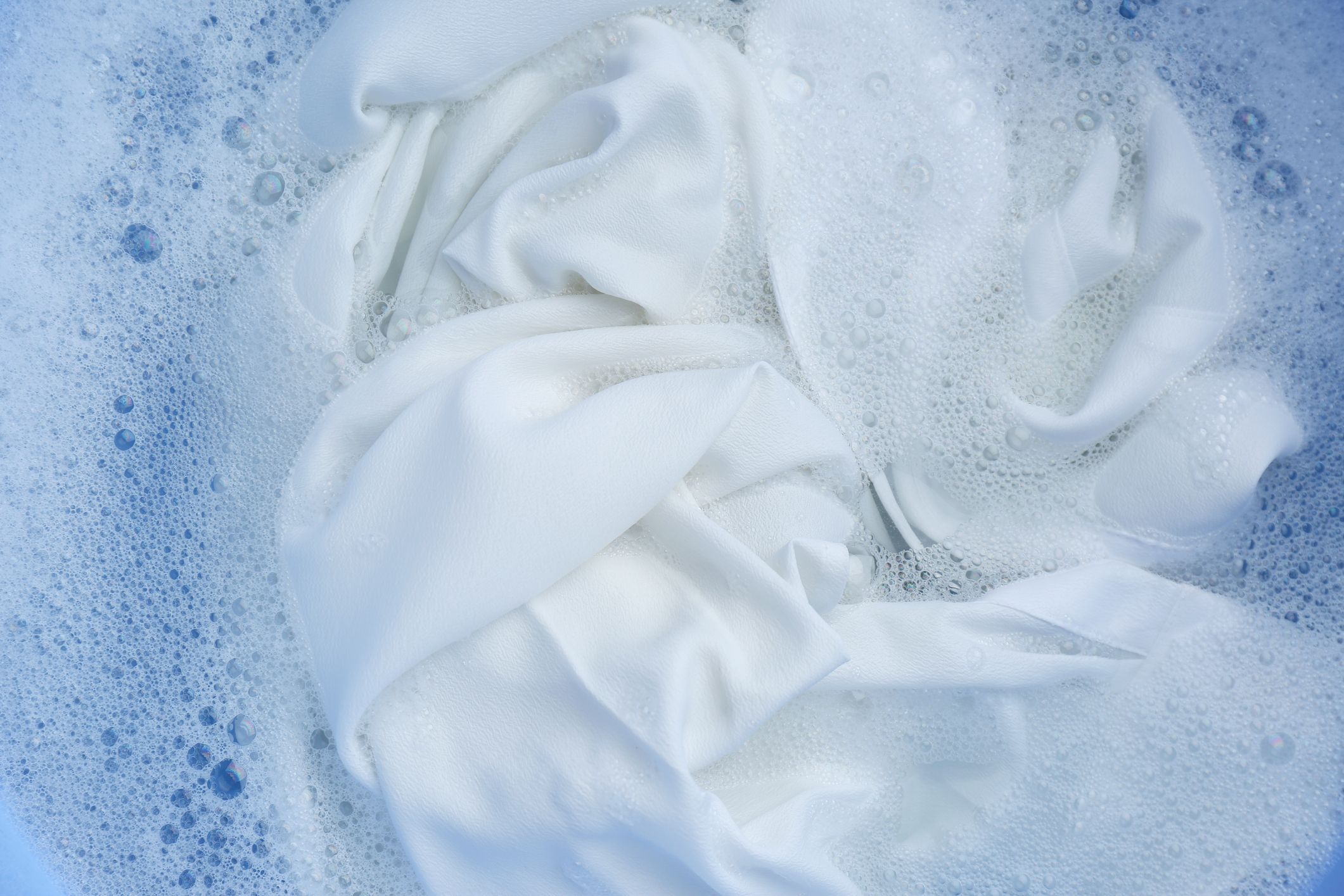OUR PRODUCTS
How Does Enzyme Laundry Detergent Work?
Published: March 5, 2024
Updated: January 23, 2025


Have you ever heard of an enzyme laundry detergent? Traditional laundry detergents use surfactants, which are chemicals that help to lift dirt and stains from fabric, while enzyme laundry detergent uses enzymes to break down specific types of stains like those from proteins, fats, and carbohydrates.

What are enzymes?
An enzyme is a type of protein that acts as a catalyst to speed up chemical reactions—which, in this case, is removing stains from laundry. Each enzyme is created to target a specific type of stain to break it down into smaller particles so that it can be lifted away from the fabric.

How do enzymes work?
Here's how the process of enzyme laundry detergent works:
-
Penetration: When you apply enzyme laundry detergent to your clothes and add water, the enzymes in the detergent begin to penetrate the fabric.
-
Specific Binding: Each type of enzyme in the detergent is specific to a certain type of stain. For example, protease enzymes target protein-based stains like blood or grass, while lipase enzymes break down oily or greasy stains. The enzymes bind specifically to the molecules of the stain they are designed to target.
-
Chemical Breakdown: Once the enzymes come into contact with their respective stains, they initiate chemical reactions that break down the complex molecules of the stains into smaller, more soluble fragments. For example, protease enzymes break the protein molecules in blood or grass stains into smaller peptides and amino acids.
-
Emulsification: Enzymes like lipases work to emulsify or break down oils and fats into smaller droplets, making them easier to lift away from the fabric.
-
Stain Removal: The broken-down stain molecules are then easily lifted away from the fabric by the detergent and water during the washing process. This helps to effectively remove tough stains that may not be easily removed by regular detergent alone.
-
Rinse: Finally, during the rinse cycle, the detergent, along with the broken-down stain molecules, is rinsed away, leaving behind clean, fresh-smelling clothes.

What are the different types of enzymes in laundry detergent?
Enzyme laundry detergents typically contain several types of enzymes, each targeting specific types of stains (Blueland Laundry Detergent Tablets use five enzymes!). Here are the most common types of enzymes found in laundry detergents and the stains they help to remove:
-
Proteases: Protease enzymes are designed to break down protein-based stains, such as blood, sweat, grass, egg, and food stains. These enzymes work by breaking the peptide bonds that hold together the protein molecules in the stains, thereby loosening and removing them from the fabric.
-
Lipases: Lipase enzymes target oily or greasy stains, such as cooking oil, butter, salad dressing, and body oils. They work by breaking down the triglyceride molecules in the stains into smaller fatty acid molecules, making them easier to lift away from the fabric.
-
Amylases: Amylase enzymes are effective against carbohydrate-based stains, including starches found in foods like pasta, rice, potatoes, and sauces. These enzymes catalyze the hydrolysis of starch molecules into smaller sugar molecules, facilitating their removal from the fabric.
-
Cellulases: Cellulase enzymes help to remove cellulose-based stains, such as those from fruits, vegetables, and grass. They work by breaking down the cellulose fibers in the stains, making them less likely to adhere to the fabric and easier to rinse away.
-
Mannanases: Mannanase enzymes target stains containing mannan, a type of polysaccharide found in some food stains, as well as in certain fabrics. These enzymes break down the mannan molecules, aiding in the removal of stains and preventing fabric damage.
-
Pectinases: Pectinase enzymes break down pectin, a complex polysaccharide found in fruits like berries, apples, and citrus fruits. These enzymes help to remove fruit stains and prevent them from setting into the fabric.
Tags
Featured Products
Loading...

